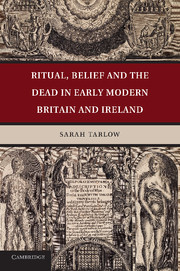Chapter 1 - Introduction
Published online by Cambridge University Press: 05 July 2014
Summary
In the late seventeenth century, an elderly Quaker widow called Priscilla Moe was put in prison because she refused to pay a fine for attending a Quaker meeting on the Isle of Wight. Priscilla, weak and unwell, died in prison. The following day, her friends came to take her body for burial according to their principles – in unconsecrated ground and with minimal ceremony – but they were turned away without her corpse. She was instead buried “in a Christian manner”, at the order of the town governor, “with so many Ceremonies and Circumstances of [the Established Church's] own, prayers and other Acts of such like Devotion, into hallowed and consecrated Ground” (Croese 1696: 180). Priscilla's friends were terribly upset that her body was subjected to what they saw as the ostentatious and ritualistic burial rites of the established church. They had their own burial ground where Friends’ bodies could be interred in unmarked graves, eschewing the conventions of west–east burial which they would have preferred to use. Yet the treatment of Priscilla's dead body had become the focus of contestation for a group of religious dissenters and their enemies. Gerard Croese, the seventeenth-century historian of Quakerism from whom we hear this anecdote, was surprised at the strength of Quaker feeling on this matter, given that “according to their Confession the Dead have no sense or feeling, neither is it any matter where they rot” (1696: 181). It seemed instead to him that the Isle of Wight Quakers had “so abhorred the superstition of others, as to favour another Superstition”.
- Type
- Chapter
- Information
- Publisher: Cambridge University PressPrint publication year: 2010

